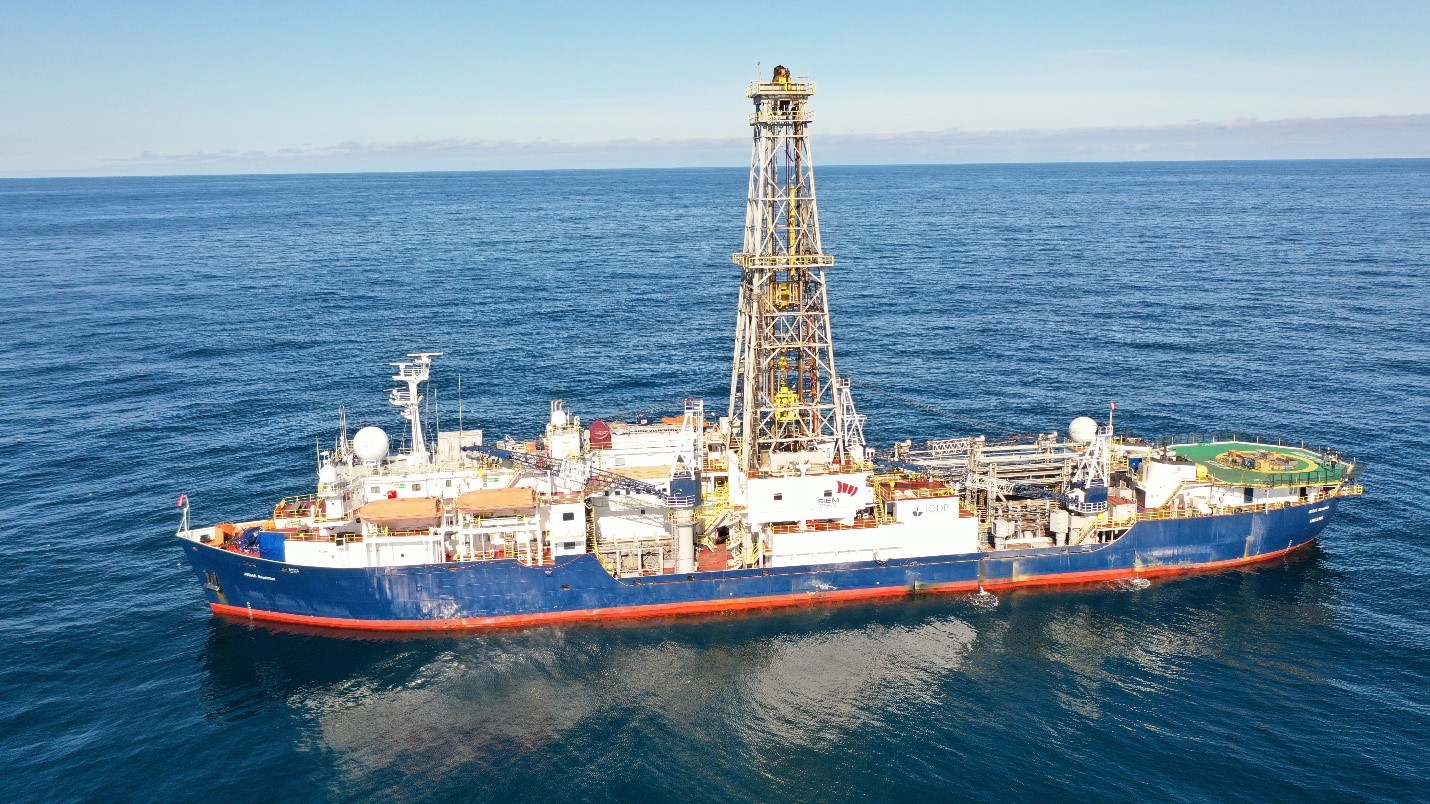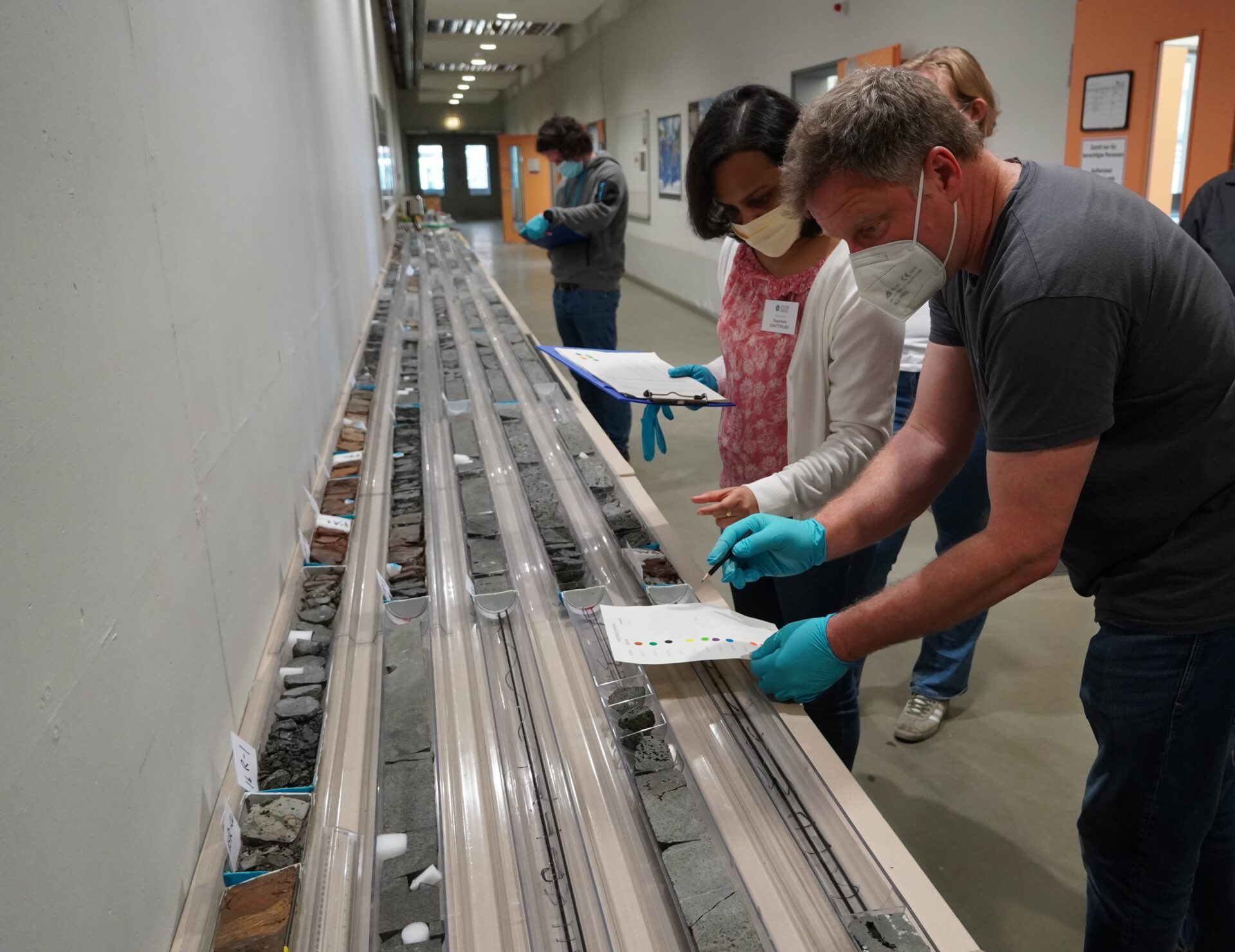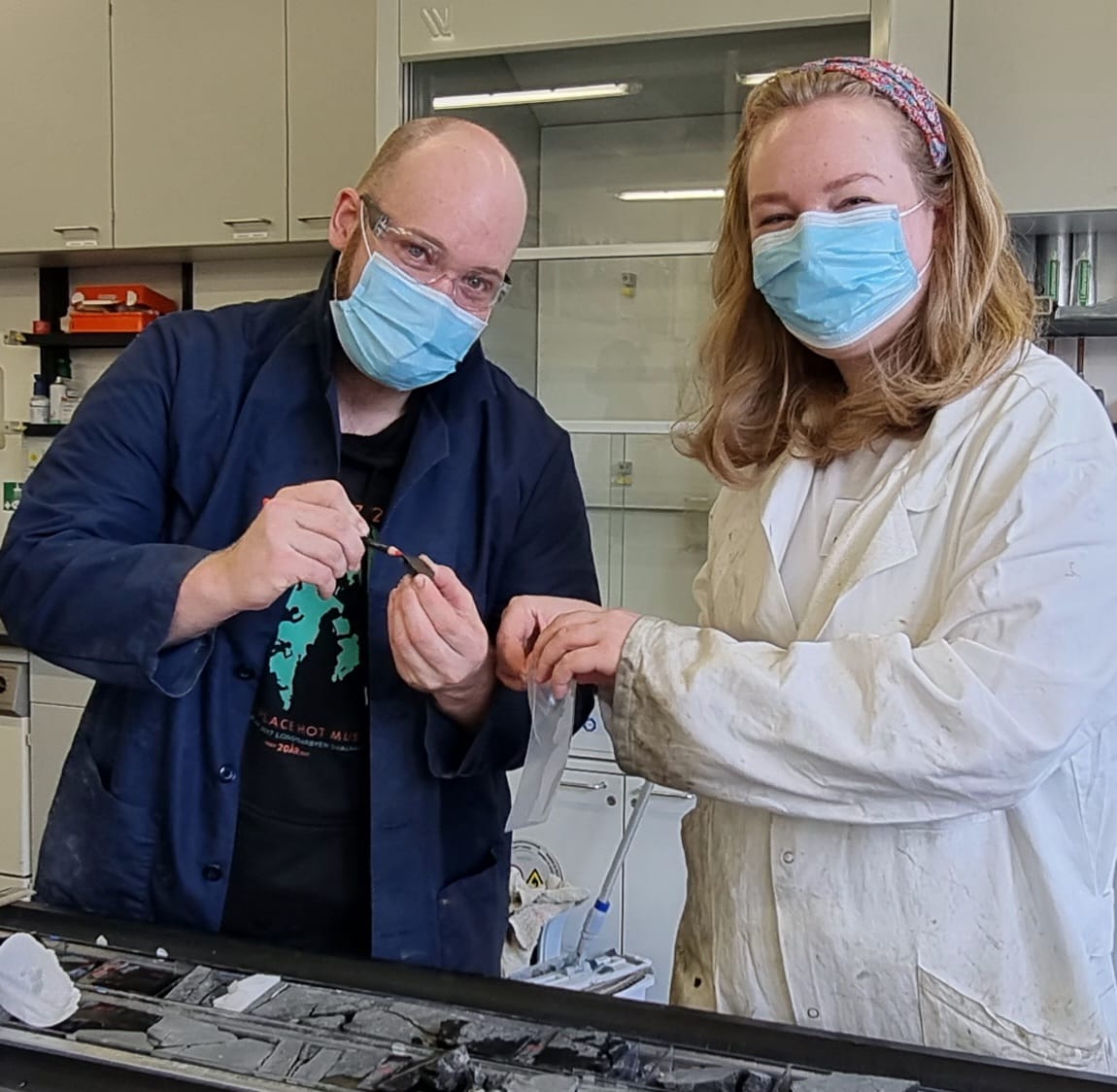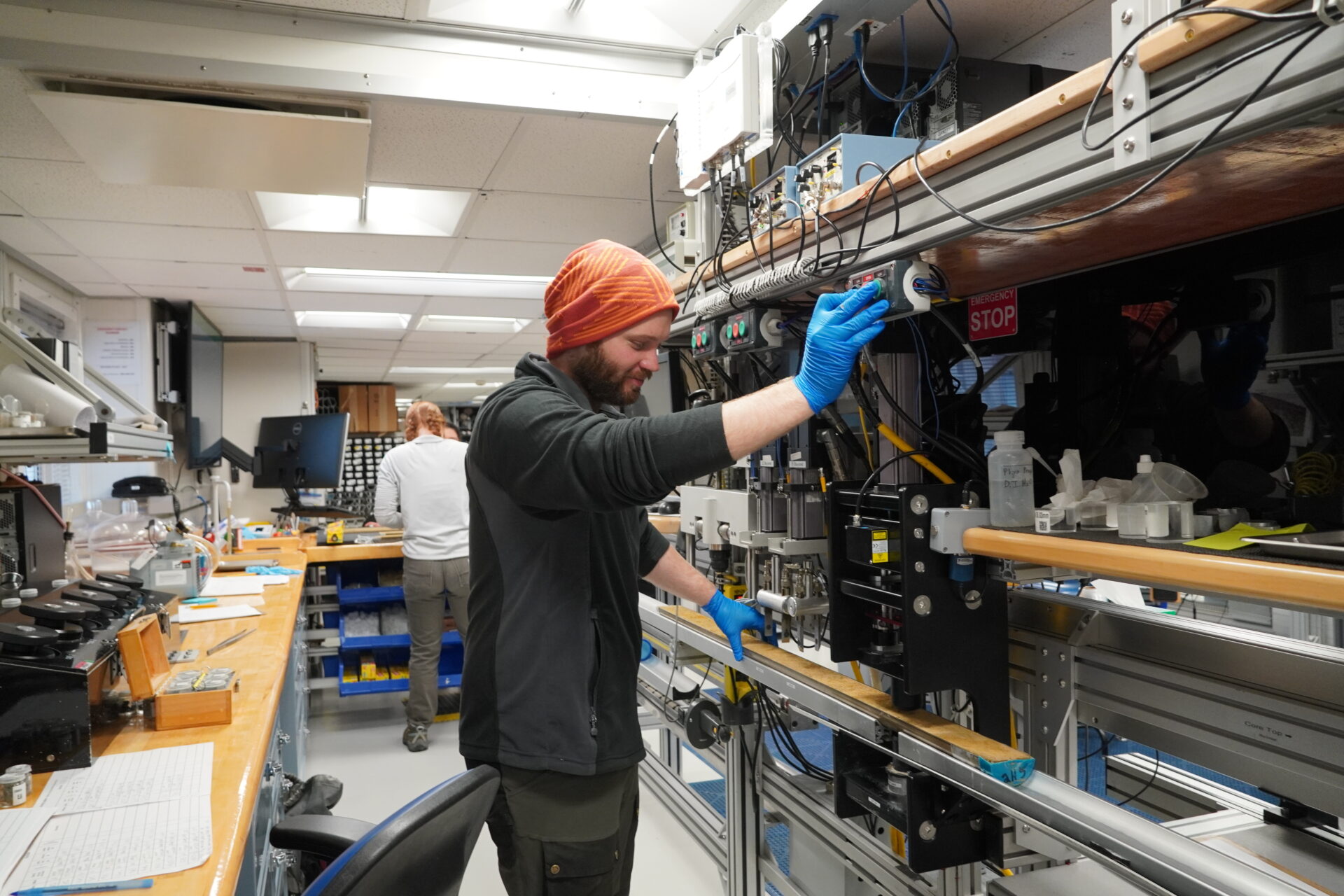Peter Betlem is a PhD candidate at the University Centre in Svalbard (UNIS) for the Norwegian CCS Research Centre (NCCS). Several weeks ago, he started his NCCS mobility stay at the Norwegian Geotechnical Institute (NGI) in Oslo. The main aim of the stay? To characterise some of the basalts recovered from the mid-Norwegian continental margin during last year’s International Ocean Discovery Programme’s Expedition 396.

First scientist-led expedition since the pandemic
The International Ocean Discovery Programme (IODP) is an international marine research collaboration that explores the Earth’s history and dynamics by drilling, coring, and monitoring the subseafloor around the globe. Combined with its four predecessors, the programme represents the longest running and most successful international Earth Science collaboration.
IODP Expedition 396, “Mid-Norwegian Margin Magmatism and Paleoclimate Implications”, aimed to understand how the large volcanic province of the Northeast Atlantic was formed, how the widespread volcanism may have led to global warming 56 million years ago, and whether the igneous province can be used as a storage site for carbon dioxide.
I was one of the lucky few to be part of Expedition 396 as a scientist on board the JOIDES Resolution (JR) scientific drilling vessel, working as part of the downhole logging and physical properties team. The expedition was the first scientist-led IODP expedition since the start of the pandemic. As a result, we sailed with a reduced science party, yet still managed to do far more than the mission plan had originally aimed for, and the expedition was a great success.
We drilled 21 boreholes at 10 sites across five geological settings on the mid-Norwegian continental margin. A comprehensive suite of downhole measurements supplemented the sampling of igneous and sedimentary rocks originating from lava flow fields, hydrothermal vent complexes, thick successions of Paleogene strata, and more. On board, the samples were characterised for bio- and lithostratigraphy, petrophysics, geochemistry, and more, paving the way for the follow-up work that has only just begun.
Sampling the basalt and sediment cores around the world
Since the expedition ended on 5 October 2021, the many hundreds of metres of recovered basalt and sediment cores have travelled across the globe. The cores were first moved to the IODP Core Repository in College Station, Texas, USA for additional measurements and then to the IODP Core Repository in Bremen, Germany for their final dissection. Many eager expedition scientists were awaiting their arrival, as well as the great Sampling Party that followed in late April, ready to drill, cut, slice and sample the material for follow-up research.
A sampling party can be best described as organised chaos. In the span of a week, thousands of samples were collected as we worked through pages and pages of sample requests. Samples ranged from a couple of grams of sediments, collected with the tip of a spatula at a few centimetres’ intervals, to half-round samples more than 10 centimetres long, collected once per core. To accommodate all the requests, the expedition scientists were split into two groups, focusing on either sediments or hard rock.

As my post-cruise work focuses on the carbon sequestration potential of basalts, I joined the hard rockers. The hard rocks were all put out on large tables in the hallway at the IODP core repository in Bremen, each piece of interest marked with a sticker and then pencil for sampling. If the pieces were too hard to cut with a knife, which the basalts typically were, drills and rock saws were used to cut the pieces to shape.
However easy it might seem, cutting a rock while not destroying the saw blade is not always an easy feat, especially when dealing with basalts. Cutting frequently resulted in clay smear jamming the blades and finding its way into the connected pore space. This made us appreciate the work that the lab technicians did onboard the JR even more, as they do all of this on a daily basis for weeks on end and much more efficiently.

Can we store CO2 in basalts?
After a week of hard work, the leftover working half sequences were neatly packed away and joined the thousands of cores sections already archived at the IODP core repositories. The collected samples were then sent on their way, and once more traversed the globe to the scientists who had requested them, marking the start of all post-cruise activities. My samples, however, had already been taken on board the JR, requiring specific sample dimensions in order to be used in NGI’s Rock Physics Laboratory.
My proposed follow-up work delves into the rock physics characteristics of these basalts for carbon capture and storage (CCS) purposes. Over the next few weeks, the samples will be regularly CT scanned, pressurised to in-situ conditions and beyond, and characterized with permeability, velocity and resistivity measurements.
These measurements are critical for appraising the carbon sequestration of Norway’s offshore basalts, an effort that is only starting to take off.
More still to come
As an early career research scientist, the experience of being part of world-leading geoscientific research has been phenomenal. I am extremely grateful for the amazing support from NGI, NCCS & partners, Volcanic Basin Energy Research AS, the Petroleum Research School of Norway, the DEEP research school, and the Meltzer Research Fund 2022 to have made this happen. The few weeks of remaining laboratory experiments are just the beginning, and there will be much to come over the coming months (and years).
Stay tuned for more.
Figure 5: A video of one of the samples collected onboard the JR. The educational/outreach video illustrates some of the unexpected surprises we encountered. Here water seeps through a porous basalt (half-core), recovered from beneath the Norwegian Sea. Video: Betlem, Millett & IODP Expedition 396 Scientists








Comments
No comments yet. Be the first to comment!